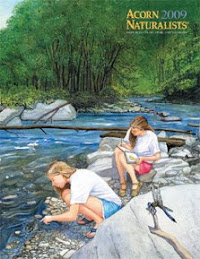 This week, first graders went into the school garden to collect samples of living things. Our mission was to define what living means. I was very careful to teach and demonstrate how to gather the living things. If students wanted to collect a leaf, I showed them it was best to take one from the ground instead of pulling it from the plant. If students wanted an insect in their collection, I said look for one that was already dead instead of taking a live specimen.
This week, first graders went into the school garden to collect samples of living things. Our mission was to define what living means. I was very careful to teach and demonstrate how to gather the living things. If students wanted to collect a leaf, I showed them it was best to take one from the ground instead of pulling it from the plant. If students wanted an insect in their collection, I said look for one that was already dead instead of taking a live specimen.The children did an excellent job in collecting their samples. Once in the classroom, the student partners, spread their examples on the carpet in a neat row. We talked about why these things would be classified as living. They said things like-- they grow, they change, and they need air, light, and food. One student said, living things don't have to be green. Another student said, they don't have to be plants. We were finally able to make a good definition of living things by sorting and classifying our samples from the garden.
When I was about the leave the class, the teacher pulled me aside and whispered--"They're just so happy to be able to go outside. Thank you! On Tuesdays we don't have time for recess!" Not only do living things need light and air, but so do six year olds! I think outdoor education not only teaches important science and ethical concepts, but it takes kids outside, into the natural environment to stay in contact with nature and teaches them how to love it gently and respectfully.




No comments:
Post a Comment